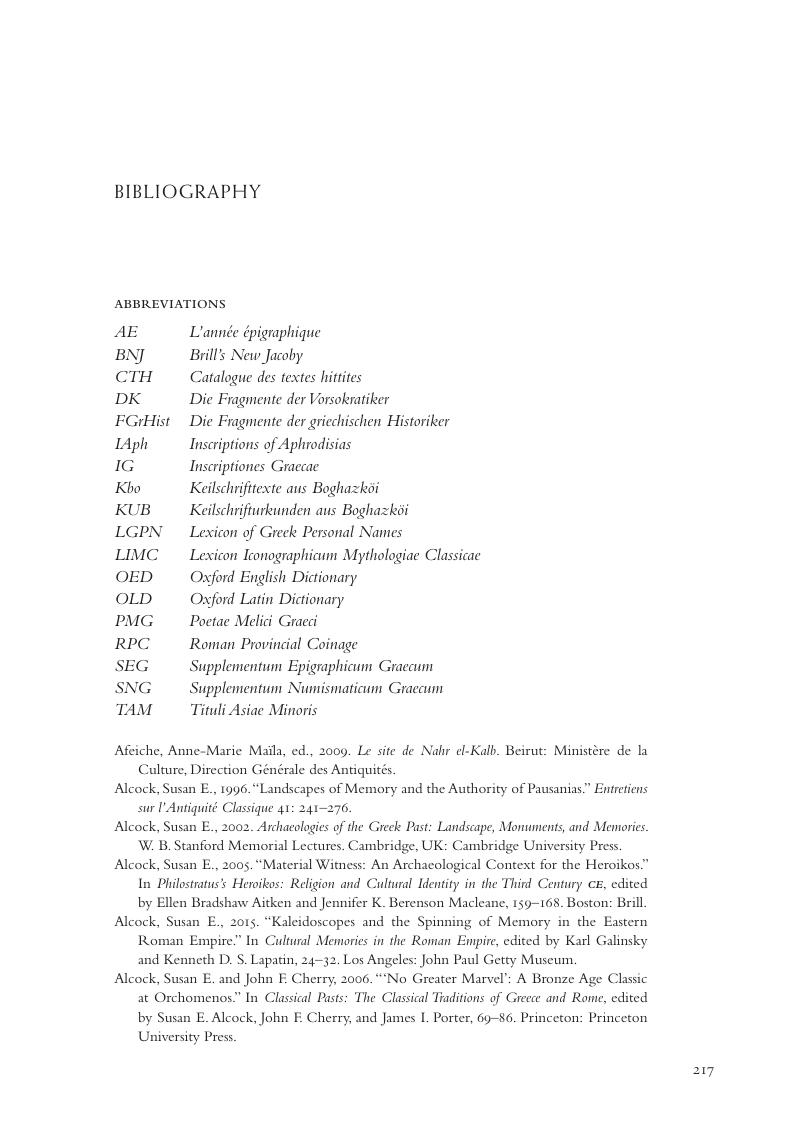Published online by Cambridge University Press: 04 October 2019

L’année épigraphique
Brill’s New Jacoby
Catalogue des textes hittites
Die Fragmente der Vorsokratiker
Die Fragmente der griechischen Historiker
Inscriptions of Aphrodisias
Inscriptiones Graecae
Keilschrifttexte aus Boghazköi
Keilschrifturkunden aus Boghazköi
Lexicon of Greek Personal Names
Lexicon Iconographicum Mythologiae Classicae
Oxford English Dictionary
Oxford Latin Dictionary
Poetae Melici Graeci
Roman Provincial Coinage
Supplementum Epigraphicum Graecum
Supplementum Numismaticum Graecum
Tituli Asiae Minoris
To save this book to your Kindle, first ensure no-reply@cambridge.org is added to your Approved Personal Document E-mail List under your Personal Document Settings on the Manage Your Content and Devices page of your Amazon account. Then enter the ‘name’ part of your Kindle email address below. Find out more about saving to your Kindle.
Note you can select to save to either the @free.kindle.com or @kindle.com variations. ‘@free.kindle.com’ emails are free but can only be saved to your device when it is connected to wi-fi. ‘@kindle.com’ emails can be delivered even when you are not connected to wi-fi, but note that service fees apply.
Find out more about the Kindle Personal Document Service.
To save content items to your account, please confirm that you agree to abide by our usage policies. If this is the first time you use this feature, you will be asked to authorise Cambridge Core to connect with your account. Find out more about saving content to Dropbox.
To save content items to your account, please confirm that you agree to abide by our usage policies. If this is the first time you use this feature, you will be asked to authorise Cambridge Core to connect with your account. Find out more about saving content to Google Drive.